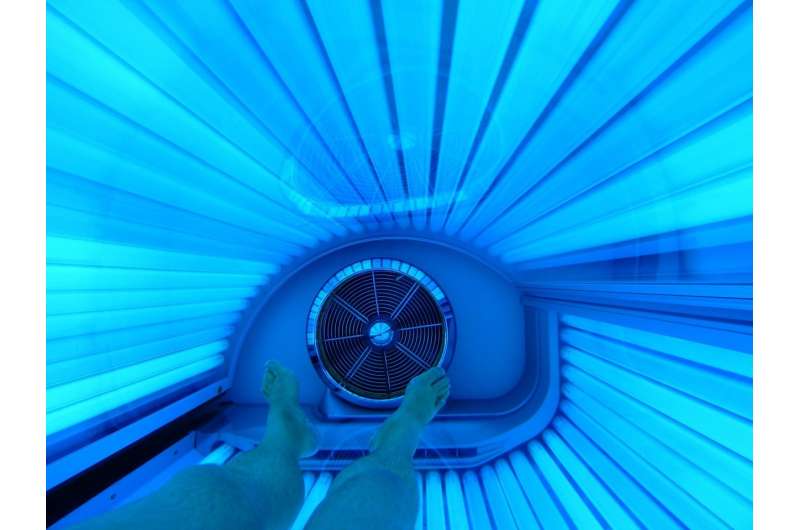Compliance with indoor tanning legislation needs improvement to mitigate risks

Compliance with legislation intended to mitigate the risks associated with indoor tanning varies widely between countries and individual facilities and is generally poor, a study published in the open access journal BMC Public Health suggests. This may reduce its intended protective effect on public health.
Researchers at the University of Guelph, Canada conducted a systematic review of 16 peer-reviewed studies, which assessed compliance with indoor tanning legislation in five countries; the US, Germany, France, Australia and Chile.
The authors reviewed compliance with age restriction requirements, parental consent or accompaniment, protective eyewear, warning labels, health risk information, health benefit information, and risk restrictions, such as a minimum of 48 hours between individual tanning sessions.
Jessica Reimann, a Ph.D. Candidate and the lead author of the study said: "We were surprised by the extent to which compliance varied from one aspect of legislation to the next. For example, compliance with providing protective eyewear was quite high at 92% on average while compliance with youth access restrictions was low at only 34% on average."
Dr. Jennifer McWhirter, a professor and the corresponding author added: "Non-compliance with communicating risks, posting warning signs, or making misleading health claims was also common, suggesting tanners may not be getting appropriate health information or, worse, may even be receiving misinformation."
The authors suggest that with the global incidence of skin cancer increasing and especially young people at increased risk from UV exposure, greater compliance is needed especially for indoor tanning risk communication and youth access.
Jessica Reimann said: "We need greater enforcement to protect the public. Checking on compliance in-person at tanning salons is an effective means to do this. Legislative amendments may also help to ensure young people are not indoor tanning. For example, removing parental consent exemptions in favour of outright youth bans would likely do a better job at deterring use of tanning beds by young people."
Considering successful strategies from other public health initiatives, such as alcohol and tobacco control, may be helpful when drafting future indoor tanning legislation, for example by monitoring and enforcing age restrictions of 18 years or higher. Putting a tax on tanning where it doesn't already exist, could fund inspections and may deter customers, according to the authors.
The authors caution that due to differences in legislation between countries and varying definitions of compliance between studies, as well as variable study designs and temporal and geographic differences, comparisons across studies were challenging. As the majority of studies examined in this review were conducted in the US, this may limit the generalizability of the findings.
More information: Jessica Reimann et al, A systematic review of compliance with indoor tanning legislation, BMC Public Health (2018). DOI: 10.1186/s12889-018-5994-4

















